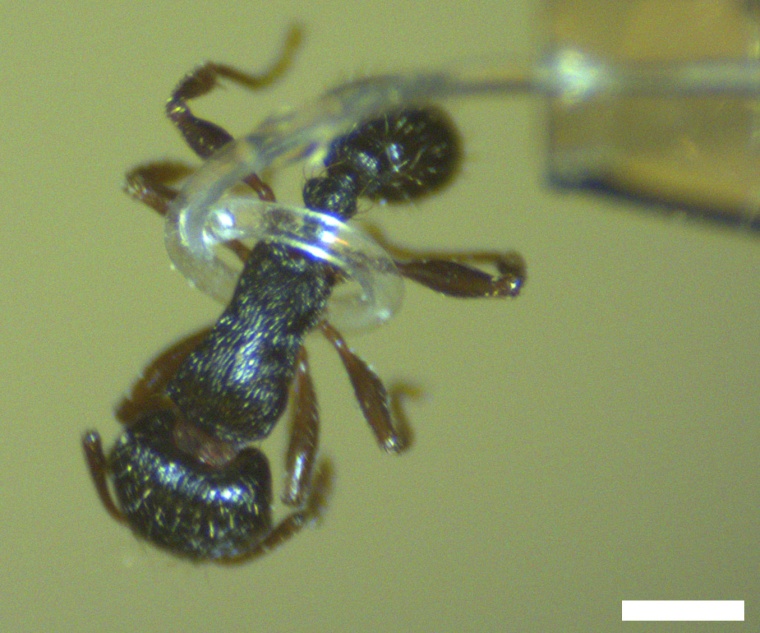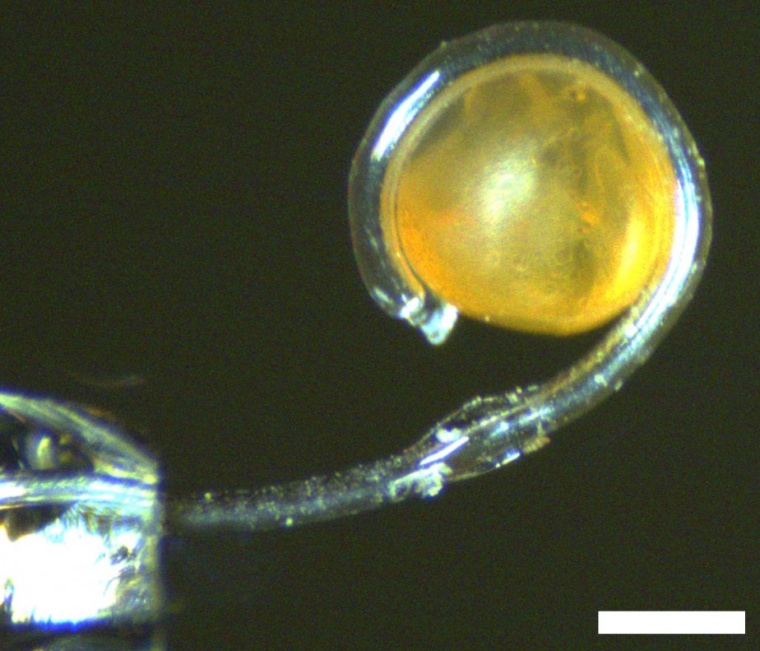
One of the many challenges of experimentation at a microscopic scale is how fragile everything is — just try to grip a fruit fly with a pair of tweezers, or inject a single cell with a needle a hundred times thinner than a human hair. A new type of soft robotic "micro-tentacle," invented by researchers at Iowa State University, could be the answer for actions that require such gentleness and precision.
The team found a way to make tiny silicone tubes that can be controlled by internal fluids and which, when activated, curl up like a closing hand, gripping whatever it's nearby — gently enough that it can hold an ant by the waist or a millimeter-wide egg without crushing it.

Not only could this be helpful for biologists looking to hold or manipulate a fragile specimen, but it could also find use in medicine and surgery. Where metal clamps and forceps might bend or break a delicate blood vessel or nerve, a soft silicone tube could gently lift or reposition it, avoiding unnecessary tissue damage.
The research, by Jungwook Paek, Inho Cho and Jaeyoun Kim, was published Thursday in the journal Scientific Reports.
